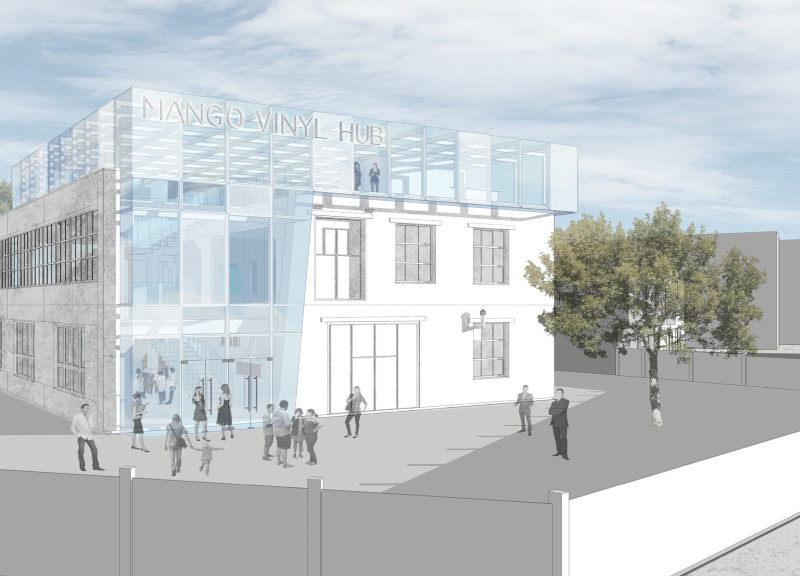5 key facts about this project
Cesis Art Village is located in Latvia and seeks to turn a historical site into a lively cultural hub. The project connects local culture with modern urban design, aiming to create a space that encourages community interaction and artistic expression. By incorporating various entertainment options, like an amphitheater, theatre, galleries, and coworking spaces, it caters to a wide audience.
Mango Vinyl Hub
The focus of the development is the Mango Vinyl Hub, which acts as the main entrance and serves as the first phase of the project. A void space at its entrance links three key areas: Mango Vinyl Press, coworking spaces, and a boutique hotel. The design enhances accessibility and encourages social interaction, making the hub a central spot for both visitors and locals.
Architectural Features
A notable aspect is the glass box positioned at the corner of the building, which faces a busy road. This structure catches the eye and provides a welcoming entrance. The glass box is important not just for its visual appeal but also for the inviting atmosphere it creates for both artists and the public.
Artist and Designer Spaces
There are specific areas dedicated to artists and designers. These include large galleries for exhibitions and studios for creative endeavors. This setup provides local artists the chance to display their work and engage with visitors, promoting a lively cultural dialogue.
Space Distribution
The arrangement of spaces is well thought out. The first floor is dedicated to coworking spaces, featuring a machine room, creative studio, and vinyl factory. On the second floor, there is a boutique hotel that includes guest rooms, a lobby, and a green terrace. This layout improves the overall function of the Art Village, enhancing the experience for everyone who visits.
The boutique hotel features a folding façade system. This design detail ensures that each guestroom maintains similar layouts while offering pleasant views of the surrounding area.


























